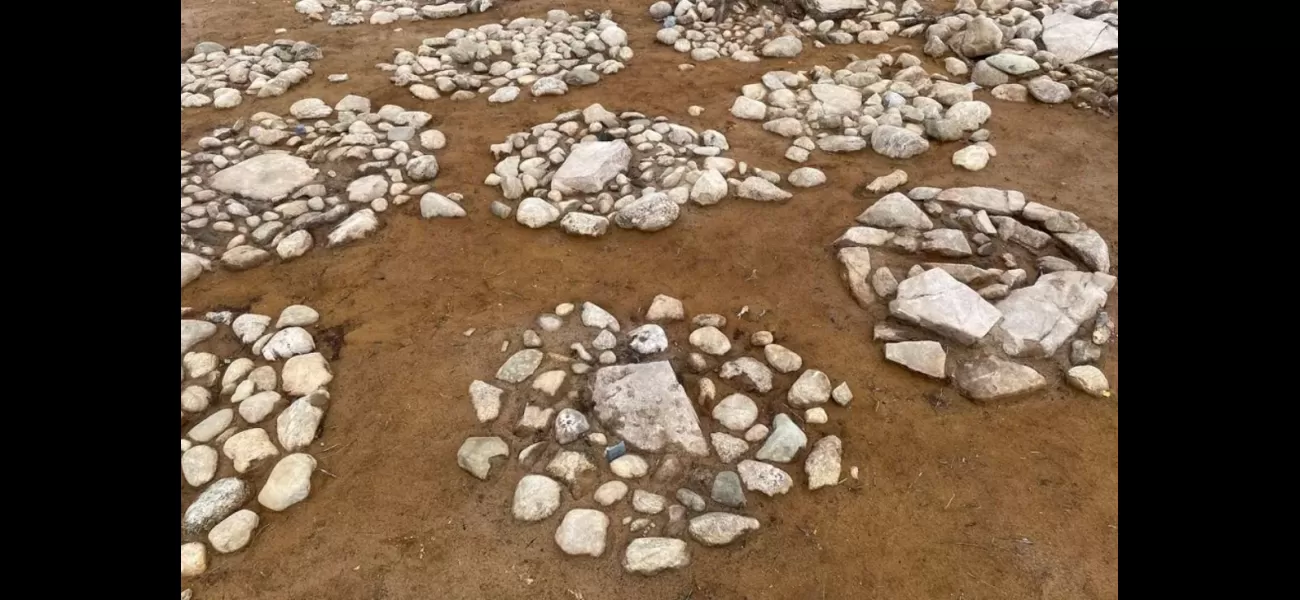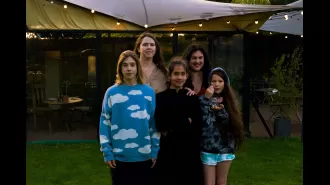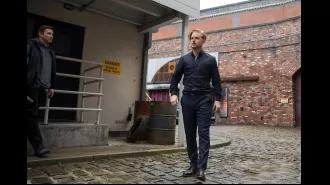Mysterious secrets behind old stone circles uncovered
There are still unanswered questions to address.
July 11th 2024.

Last year, a team of dedicated archaeologists were hard at work excavating a Stone Age site in Norway, when they stumbled upon an incredible discovery. As they carefully dug through the earth, they came across a hidden burial field, adorned with circles of expertly placed stones. This was a surprising find, as they were not expecting to uncover such a unique and well-preserved site.
But the real mystery lay in the contents of the graves themselves. Out of the 41 graves that were unearthed, all but two contained the remains of children. It was a poignant and heart-wrenching sight, as the team realized that these were the final resting places of young lives cut tragically short. The site, located near Fredrikstad in the southern part of Norway, close to the Swedish border, was unlike anything they had ever seen before.
What set this burial site apart was not just the presence of children, but also its use over several hundred years, spanning both the Bronze and Iron Ages. This was truly remarkable, as most burial sites from this time period were used for much shorter periods. The team was amazed by the level of care and attention that had gone into creating the stone circles. Each stone was carefully selected from a different location and placed with precision, a testament to the importance and significance of these burials.
The team's discovery was quite accidental, as they had been excavating a nearby Stone Age site when they stumbled upon this hidden gem. In an interview with Science Norway, one of the archaeologists, Ms. Fossum, shared her thoughts on the site. She marveled at the meticulous craftsmanship and wondered about the people behind it. It was only when the analysis results came in that they were able to make sense of the site. The graves were those of small children, and it was clear that each burial had been done with great care and reverence.
Along with the remains, the team also found fragments of pottery, some of which contained bones, while others did not. They also discovered a possible brooch, which added to the intrigue of the site. Ms. Fossum explained that the pottery fragments could provide valuable insights into the beliefs and practices of the people who used this burial site. They were particularly curious about the vessels that were placed between the graves and what they might have contained.
One of the most pressing questions raised by this discovery was why the children were buried separately and for such an extended period. Ms. Fossum shared that they were still trying to piece together the beliefs and rituals of the society that used this site. It was possible that they believed in the transformation of the body through fire to release the soul. These traditions and rituals were a way to honor and remember the departed, much like how we remember our loved ones today.
Another interesting detail was the similarity between the graves, suggesting a more egalitarian social structure. Ms. Fossum noted that there wasn't much difference between the graves in terms of grave goods and burial methods, which pointed to a community-oriented society. This was a fascinating insight into the people who lived during this time period.
The team's findings were so significant that a stone formation from one of the children's graves will be displayed at the Historical Museum in Oslo as part of an exhibition titled "In Memory of the Children." It is a beautiful and poignant tribute to the young lives that were laid to rest in this ancient burial site in Norway.
But the real mystery lay in the contents of the graves themselves. Out of the 41 graves that were unearthed, all but two contained the remains of children. It was a poignant and heart-wrenching sight, as the team realized that these were the final resting places of young lives cut tragically short. The site, located near Fredrikstad in the southern part of Norway, close to the Swedish border, was unlike anything they had ever seen before.
What set this burial site apart was not just the presence of children, but also its use over several hundred years, spanning both the Bronze and Iron Ages. This was truly remarkable, as most burial sites from this time period were used for much shorter periods. The team was amazed by the level of care and attention that had gone into creating the stone circles. Each stone was carefully selected from a different location and placed with precision, a testament to the importance and significance of these burials.
The team's discovery was quite accidental, as they had been excavating a nearby Stone Age site when they stumbled upon this hidden gem. In an interview with Science Norway, one of the archaeologists, Ms. Fossum, shared her thoughts on the site. She marveled at the meticulous craftsmanship and wondered about the people behind it. It was only when the analysis results came in that they were able to make sense of the site. The graves were those of small children, and it was clear that each burial had been done with great care and reverence.
Along with the remains, the team also found fragments of pottery, some of which contained bones, while others did not. They also discovered a possible brooch, which added to the intrigue of the site. Ms. Fossum explained that the pottery fragments could provide valuable insights into the beliefs and practices of the people who used this burial site. They were particularly curious about the vessels that were placed between the graves and what they might have contained.
One of the most pressing questions raised by this discovery was why the children were buried separately and for such an extended period. Ms. Fossum shared that they were still trying to piece together the beliefs and rituals of the society that used this site. It was possible that they believed in the transformation of the body through fire to release the soul. These traditions and rituals were a way to honor and remember the departed, much like how we remember our loved ones today.
Another interesting detail was the similarity between the graves, suggesting a more egalitarian social structure. Ms. Fossum noted that there wasn't much difference between the graves in terms of grave goods and burial methods, which pointed to a community-oriented society. This was a fascinating insight into the people who lived during this time period.
The team's findings were so significant that a stone formation from one of the children's graves will be displayed at the Historical Museum in Oslo as part of an exhibition titled "In Memory of the Children." It is a beautiful and poignant tribute to the young lives that were laid to rest in this ancient burial site in Norway.
[This article has been trending online recently and has been generated with AI. Your feed is customized.]
[Generative AI is experimental.]
0
0
Submit Comment





